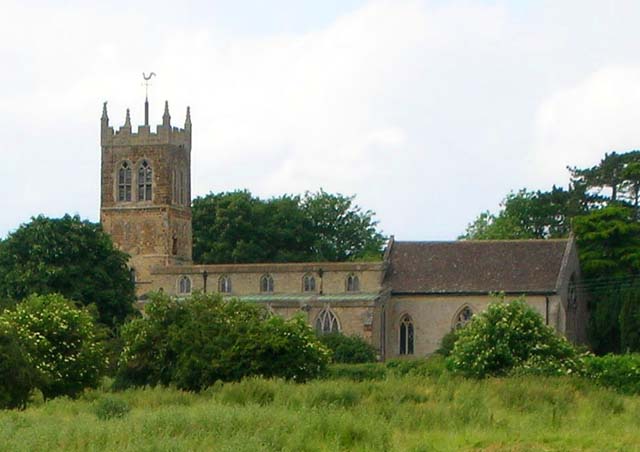Pytchley
Settlement in Northamptonshire
England
Pytchley

Pytchley is a small village located in the county of Northamptonshire, England. Situated approximately 9 miles northeast of Northampton, it falls under the administrative district of Kettering. The village is set amidst the picturesque countryside, surrounded by rolling hills and open fields.
Pytchley is renowned for its rich history, dating back to the Anglo-Saxon era. The village is mentioned in the Domesday Book of 1086, and its name is believed to be derived from the Old English words "pict" and "leah," meaning "wood or clearing of the Picts."
The heart of Pytchley is centered around the village green, a charming open space that has served as a meeting point for locals for centuries. The green is home to a number of historic buildings, including the 15th-century Church of St. John the Baptist, known for its beautiful stained glass windows and intricate architecture.
The village also boasts a strong equestrian tradition, being the birthplace of the Pytchley Hunt. Established in 1750, it is one of the oldest and most prestigious hunts in England. The surrounding countryside provides excellent opportunities for horse riding and exploring scenic bridleways.
Despite its small size, Pytchley offers various amenities to its residents and visitors. These include a local pub, a primary school, and a village hall that hosts community events and gatherings.
Overall, Pytchley is a quintessential English village, cherished for its tranquil surroundings, rich heritage, and strong sense of community.
If you have any feedback on the listing, please let us know in the comments section below.
Pytchley Images
Images are sourced within 2km of 52.363769/-0.739186 or Grid Reference SP8574. Thanks to Geograph Open Source API. All images are credited.






Pytchley is located at Grid Ref: SP8574 (Lat: 52.363769, Lng: -0.739186)
Unitary Authority: North Northamptonshire
Police Authority: Northamptonshire
What 3 Words
///tries.lawns.walks. Near Broughton, Northamptonshire
Nearby Locations
Related Wikis
Pytchley
Pytchley is a village and civil parish in Northamptonshire, England, three miles south-west of Kettering and near the A14 road. At the time of the 2011...
Broughton, Northamptonshire
Broughton is a large village and civil parish in North Northamptonshire, England. The village is around 2 miles (3.2 km) south-west of Kettering and is...
Bishop Stopford School
Bishop Stopford School is a secondary school and sixth form with academy status in Kettering, Northamptonshire, England.The school is located in the Headlands...
Kettering Conference Centre
The Kettering Conference Centre was a multi-functional sports and conference centre located in Kettering, Northamptonshire. It was also the location of...
Nearby Amenities
Located within 500m of 52.363769,-0.739186Have you been to Pytchley?
Leave your review of Pytchley below (or comments, questions and feedback).












